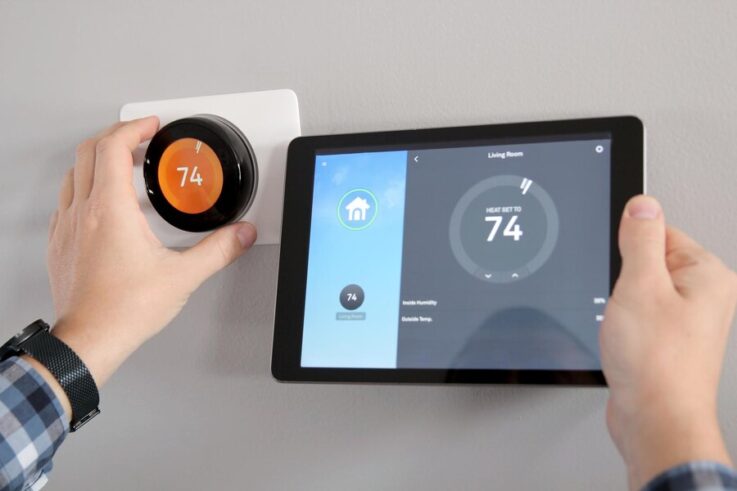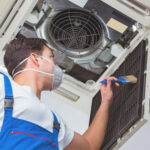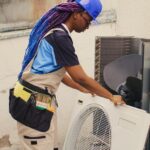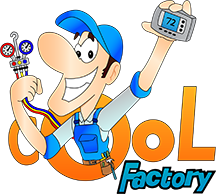
Common Thermostat Problems and Solutions
Common Thermostat Problems and Solutions
Thermostats are a crucial component of any heating or cooling system, regulating the temperature to keep your home comfortable year-round. However, like any mechanical device, they can encounter issues that disrupt their functionality. From faulty readings to unresponsive controls, common thermostat problems can leave you feeling frustrated and uncomfortable. But fear not! In this blog post, we’ll explore some of the most prevalent thermostat problems homeowners face and provide practical solutions to help you regain control of your indoor climate. Let’s dive in and troubleshoot those thermostat woes!
Understanding Thermostat Functionality
Thermostats function as the nucleus of your home’s climate control, orchestrating the initiation and cessation of heating or cooling to uphold your preferred indoor temperature. These devices leverage sensors to gauge prevailing temperatures, contrasting them against the user-set preferences, and subsequently dispatch commands to the HVAC system.
Grasping the intricacies of thermostat functionality furnishes you with the capability to adeptly troubleshoot any arising malfunctions and fine-tune its operations to achieve peak comfort and energy conservation. By comprehending the inner workings of this pivotal component, you not only enhance your living environment but also foster a more sustainable and cost-effective household climate management approach.
Importance of a Well-Functioning Thermostat
A well-functioning thermostat is not just a convenience but a cornerstone of home comfort and efficiency. It serves as the linchpin between you and your HVAC system, ensuring that your indoor environment remains consistently comfortable while simultaneously curbing excessive energy consumption and utility expenses. By effectively regulating heating and cooling cycles, a properly functioning thermostat prevents undue strain on HVAC equipment, prolonging its lifespan and reducing the likelihood of costly repairs.
Moreover, its precision temperature control capability empowers you to tailor your home’s climate to your exact preferences, fostering an environment conducive to relaxation and productivity. Through regular maintenance and prompt resolution of any issues, you can reap the benefits of optimal comfort and energy savings year-round.
Signs of Thermostat Problems
Your thermostat regulates home comfort, but malfunctions lead to discomfort and high bills. Early recognition of signs like temperature variations and unresponsive controls is crucial for prevention. Here are four common indicators that your thermostat may be malfunctioning:
- Temperature Variations: If you notice inconsistent temperatures throughout your home, with some rooms feeling too hot while others remain chilly, it could signal a thermostat issue.
- HVAC System Short Cycling: Short, frequent cycles of your heating or cooling system indicate that the thermostat is not effectively regulating temperature, causing your HVAC system to overwork.
- Unresponsive Controls: Difficulty adjusting the temperature settings or unresponsiveness to input commands may indicate a malfunctioning thermostat.
- Sudden Increase in Energy Bills: A malfunctioning thermostat can cause your HVAC system to operate inefficiently, resulting in higher-than-normal energy consumption and utility bills.
Erratic Temperature Readings: What’s Wrong?
Erratic temperature readings from your thermostat can be frustrating and disruptive to your indoor comfort. Several factors could contribute to this issue, including a malfunctioning thermostat sensor, improper thermostat placement, or wiring problems. If your thermostat is located near heat sources or in direct sunlight, it may register inaccurate temperatures, leading to inconsistent heating or cooling cycles.
Additionally, dust or debris accumulation around the thermostat sensor can interfere with its accuracy. To address erratic temperature readings, consider recalibrating your thermostat, relocating it to a more suitable location, or seeking professional assistance to diagnose and rectify underlying issues.
Unresponsive Controls: Troubleshooting Tips
Encountering unresponsive controls on your thermostat can be frustrating, especially when you’re trying to adjust the temperature for comfort. Begin by checking the power source; dead batteries or a tripped circuit breaker could be the culprit. Next, ensure that the thermostat is clean and free of dust or debris that may impede its functionality.
If these basic checks don’t resolve the issue, try resetting the thermostat or checking for loose wiring connections. Sometimes, a simple reboot or tightening of wires can restore functionality. If the problem persists, consider consulting a professional technician for further diagnosis and repair.
The Dreaded Blank Screen: Solutions at Hand
Encountering a blank screen on your thermostat can induce panic, but fret not—several troubleshooting steps can help. Firstly, ensure the thermostat is powered; check batteries or circuit breakers for proper supply. If power is intact, inspect wiring connections for loose or damaged wires; a loose wire can cause a blank display. Try resetting the thermostat by removing and reattaching it after a few minutes.
If efforts fail, it may signify a faulty thermostat needing professional attention or replacement. Don’t despair; with patience and methodical troubleshooting, you can likely restore functionality to your thermostat and regain control over your home’s climate. Remember, seeking professional help is always an option if DIY attempts prove unsuccessful.
Dealing with Thermostat Wiring Issues
Dealing with thermostat wiring issues is crucial for maintaining seamless communication between your thermostat and HVAC system, preventing heating or cooling malfunctions. Begin by meticulously inspecting connections to ensure they’re secure and correctly seated; loose or damaged wires can cause intermittent operation or system failure. Employ a multimeter to assess wire continuity and functionality accurately. Promptly replace any damaged wires encountered to restore proper functionality.
For intricate wiring issues beyond DIY scope, seek assistance from a qualified HVAC technician for effective diagnosis and repair. By addressing wiring concerns promptly and comprehensively, you ensure your thermostat operates seamlessly, maintaining optimal comfort levels throughout your home.
Battery Problems: Simple Fixes
Battery problems in thermostats can cause issues like unresponsiveness or a blank screen. Luckily, resolving them is usually simple. Start by replacing old batteries with fresh ones, ensuring correct insertion based on polarity markings. Clean battery contacts to eliminate corrosion or buildup hindering electrical conductivity. Regularly checking and replacing thermostat batteries as needed helps prevent unexpected disruptions to your heating and cooling system, ensuring consistent comfort year-round.
By addressing battery issues promptly and maintaining battery health, you can avoid unnecessary inconvenience and maintain seamless operation of your thermostat, providing reliable climate control for your home.
Thermostat Compatibility with HVAC Systems
Ensuring compatibility between your thermostat and HVAC system is crucial for efficient operation and optimal performance. Before installing a new thermostat, verify that it is compatible with your heating and cooling equipment, considering factors such as voltage requirements, system type (e.g., central air, heat pump), and stage of heating or cooling.
Incompatible thermostats may not function correctly or could potentially damage your HVAC system. Consult the manufacturer’s specifications or seek guidance from a qualified HVAC technician to select a thermostat that seamlessly integrates with your system, maximizing energy savings and comfort.
Programming Glitches: How to Reset
Encountering programming glitches on your thermostat can disrupt your comfort and schedule, but resetting the device can often resolve these issues. Start by locating the reset button on your thermostat, typically found on the device’s front or inside the battery compartment. Press and hold the reset button for several seconds until the display resets or the device powers off and then back on.
Alternatively, you can perform a manual reset by removing the thermostat from its base and disconnecting the power source for a few minutes before reconnecting it. After resetting, reprogram your thermostat settings as needed to restore your preferred schedule and temperature settings.
Sensor Malfunctions: Diagnosis and Repair
When your thermostat’s sensor malfunctions, it can lead to inaccurate temperature readings and ineffective heating or cooling. Start by ensuring that the sensor is clean and unobstructed, as dirt or debris buildup can interfere with its function. Next, check for any visible damage to the sensor or its wiring. If the sensor appears damaged or faulty, it may need to be replaced.
Additionally, recalibrating the thermostat or adjusting its placement can sometimes resolve sensor issues. If troubleshooting steps fail to resolve the problem, consider consulting a professional HVAC technician for a thorough diagnosis and repair to restore proper sensor functionality.
Common User Errors and Their Remedies
Even with modern thermostats’ user-friendly designs, it’s easy to make mistakes that can affect your HVAC system’s performance. One common error is setting the thermostat too high or too low, leading to unnecessary energy consumption and discomfort. To remedy this, adjust the temperature to a more reasonable level based on your comfort preferences and the season.
Another frequent mistake is neglecting to change the thermostat’s batteries regularly, resulting in power-related issues. Simply replacing the batteries can often resolve unresponsiveness or display problems. If you’re unsure how to address a specific user error, consult your thermostat’s manual or seek guidance from the manufacturer’s customer support.
Seeking Professional Help
While some thermostat issues can be resolved through DIY troubleshooting, complex problems may require professional intervention. If you’ve exhausted all troubleshooting steps or lack the necessary expertise to diagnose and repair the issue, it’s time to seek assistance from a qualified HVAC technician. Professional technicians have the knowledge, tools, and experience to identify underlying problems accurately and implement effective solutions.
Whether it’s repairing wiring issues, recalibrating sensors, or upgrading to a more advanced thermostat model, a professional can ensure your HVAC system operates efficiently and reliably. Don’t hesitate to reach out for professional help when needed to avoid further complications and ensure your comfort and safety.
Understanding common thermostat problems and their solutions is essential for maintaining a comfortable indoor environment and optimizing energy efficiency. By recognizing early signs of malfunction and taking proactive steps to address them, you can prevent disruptions to your heating and cooling system. Don’t hesitate to reach out to professionals for assistance.
At Cool Factory, Inc in Sterling, VA, our team of experts is ready to help with any thermostat-related concerns. Give us a call at (703) 713-5113 to schedule a service appointment and ensure your home stays cozy and energy-efficient year-round.






